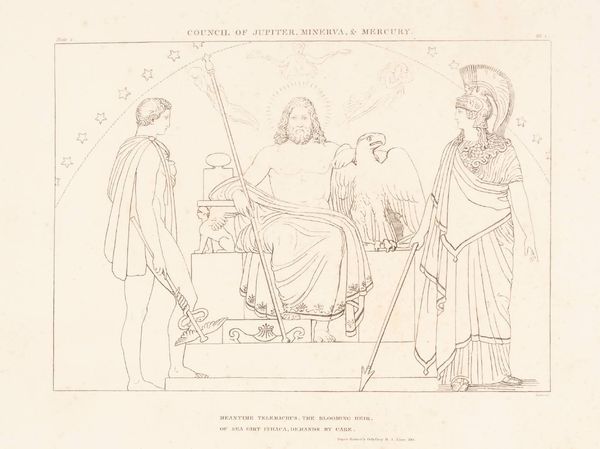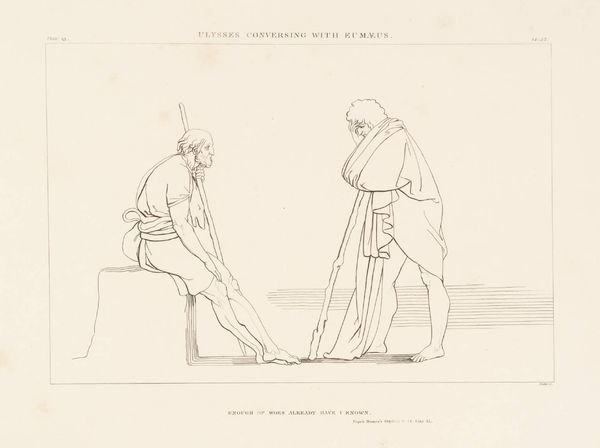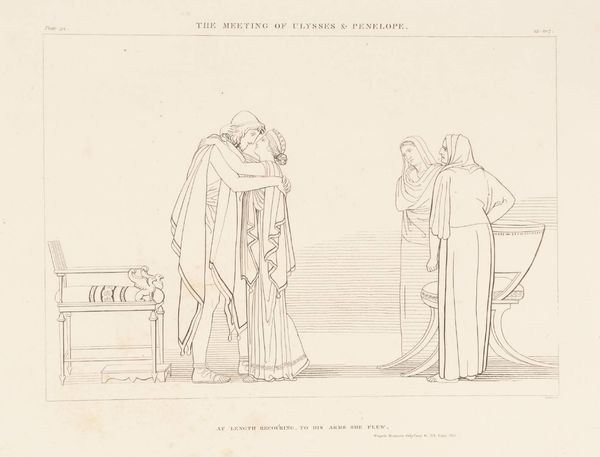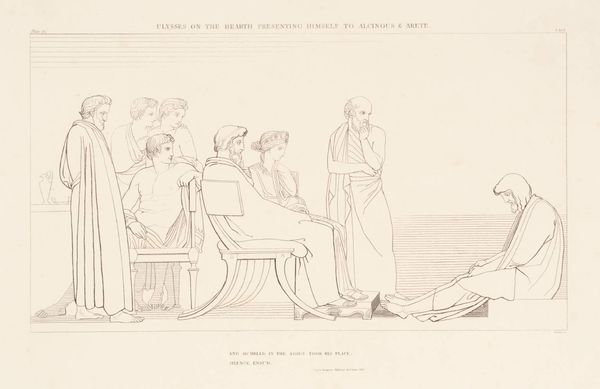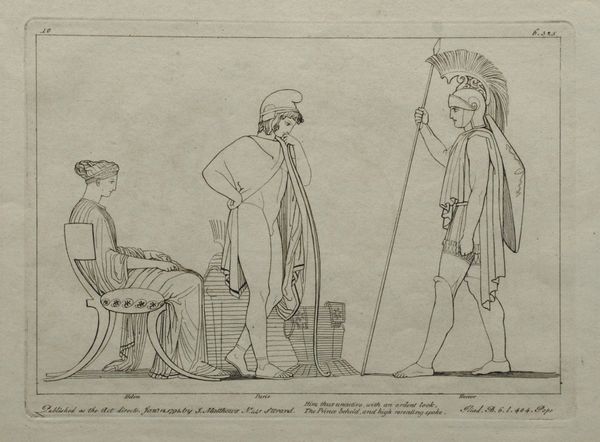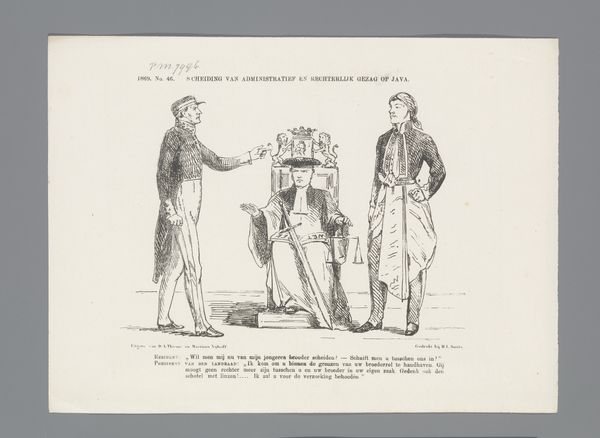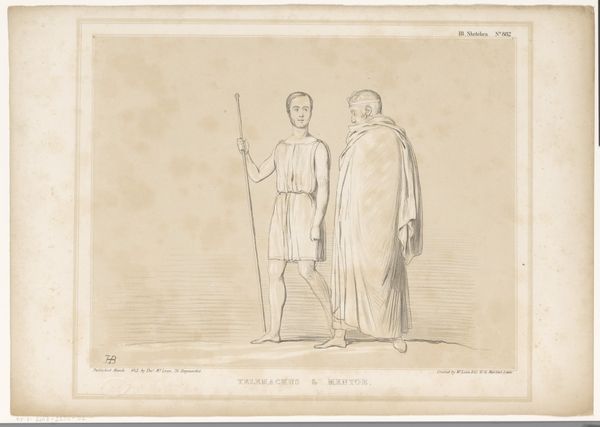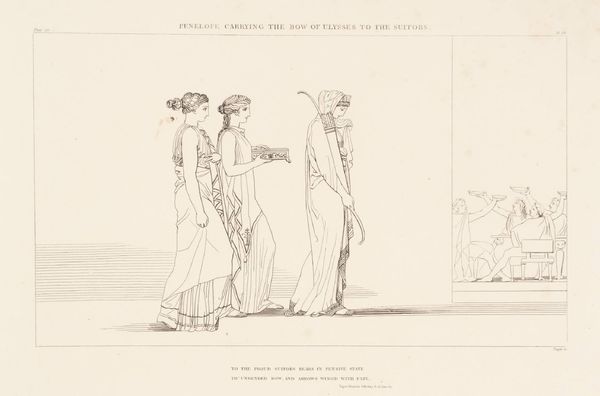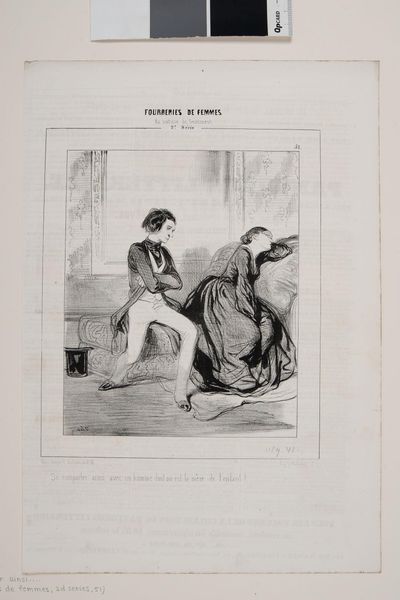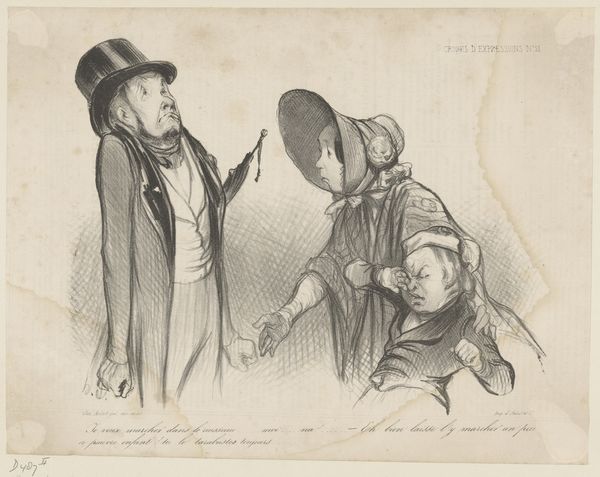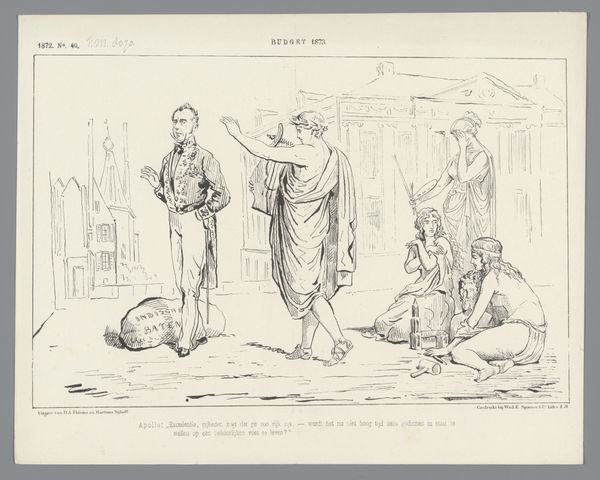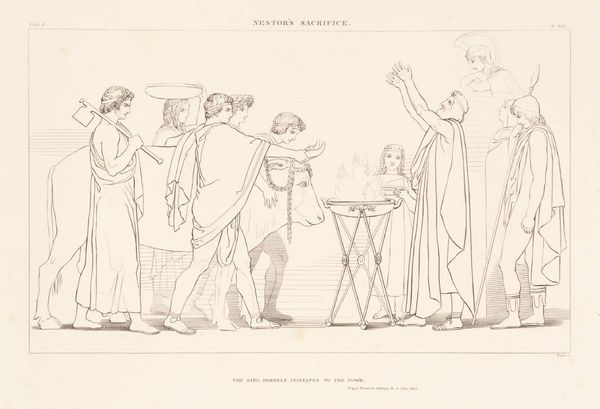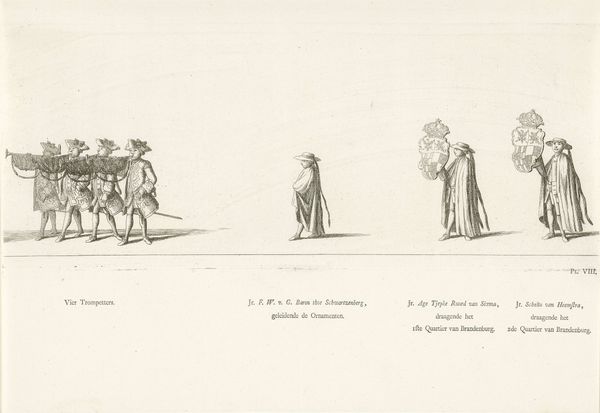
Dimensions: image: 170 x 248 mm
Copyright: CC-BY-NC-ND 4.0 DEED, Photo: Tate
Curator: This is John Flaxman's "Minerva Restoring Ulysses to his Own Shape," now held in the Tate Collections. Editor: The starkness of line and muted palette create such a sense of quietude and anticipation. It feels strangely modern in its restraint. Curator: Flaxman, born in 1755, was deeply influenced by neoclassicism. Look at the purity of line, the emphasis on contour and form – a direct engagement with classical ideals. Editor: But there’s also a clear process here. It is an engraving, which speaks to a wider distribution and accessibility of classical themes beyond painting's elite circles. Curator: Precisely! The composition directs our eye. Minerva's gesture, the gaze of Ulysses—a study in visual rhetoric. Editor: And what does that gesture truly represent? Not just divine intervention, but the restoring of agency, perhaps a comment on power structures and transformations through material means. Curator: I am struck by how Flaxman distills this moment to its essential visual elements, creating a timeless representation. Editor: I'm drawn to how the material simplicity of the engraving allows the story to be disseminated and consumed on a much wider social scale.
